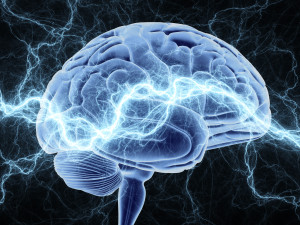Oxford FSL Software Helps Read Minds

12th October 2007
Scientists at Oxford University have released the latest version of their FSL software, which allows clinicians and researchers to analyse images of the brain, providing insights and improved treatment of conditions including schizophrenia, Alzheimer’s disease, multiple sclerosis, epilepsy, and Parkinson’s.
Earlier versions of FSL software – developed at Oxford’s FMRIB Centre – have been used for applications ranging from mapping the effects of smoking on different parts of the brain to showing the response of multiple sclerosis patients to a new therapy.
FSL Software
The software uses multiple functional Magnetic Resonance Imaging (FMRI) ‘snapshots’ to track brain activation, produce high-resolution images of brain structure in fine detail, and map the brain’s connectivity patterns.
“This FSL software gives you a “colour-blob” image of brain activity,” said Professor Stephen Smith of FMRIB. “It shows which parts of the brain light up as you give sensory stimulation or cognitive tasks to the patient. My group works on turning the imaging data into useful information. We work daily with experts in anatomy and physiology who apply our software in their research on understanding the brain’s function, structure and pathologies.”
The new software, FSL 4.0, includes improvements relevant to many different types of research.
Pharmaceutical studies, which look at how different brain structures are affected by drug treatment or disease, can be improved by one of the new tools – FIRST – which provides much greater accuracy in modelling structures in the brain, analysing whether parts of the brain are changing shape, not just volume.
FSL 4.0 also provides a way to measure how much the brain has changed over time – a very useful capability for evaluating the effectiveness of a drug in patients.
Another new tool, ‘MELODIC’, analyses images to find unexpected signals, or surprising differences between patients and control groups with normal brain function. MELODIC can for example distinguish between different types of disease, including differentiating Alzheimer’s from other forms of dementia, and categorising different types of schizophrenia.
Other FSL software tools allow the modelling of white-matter brain tissue and can be used to track changes in brain connectivity. These tools have already been used to learn more about bipolar disorder and other diseases.
“We hope our advances in image analysis technology will lead to earlier diagnosis and improved treatment of many conditions,” said Professor Smith. “The various FSL software tools should allow us to learn more about the nature of different brain diseases, and the healing effects that drugs can have. A more long-term goal is that we can also make a big difference for healthcare in the individual, providing more tailored medicine through improved diagnosis.”
The FSL software can be downloaded by academic groups at www.fmrib.ox.ac.uk/fsl
Press release sign up
